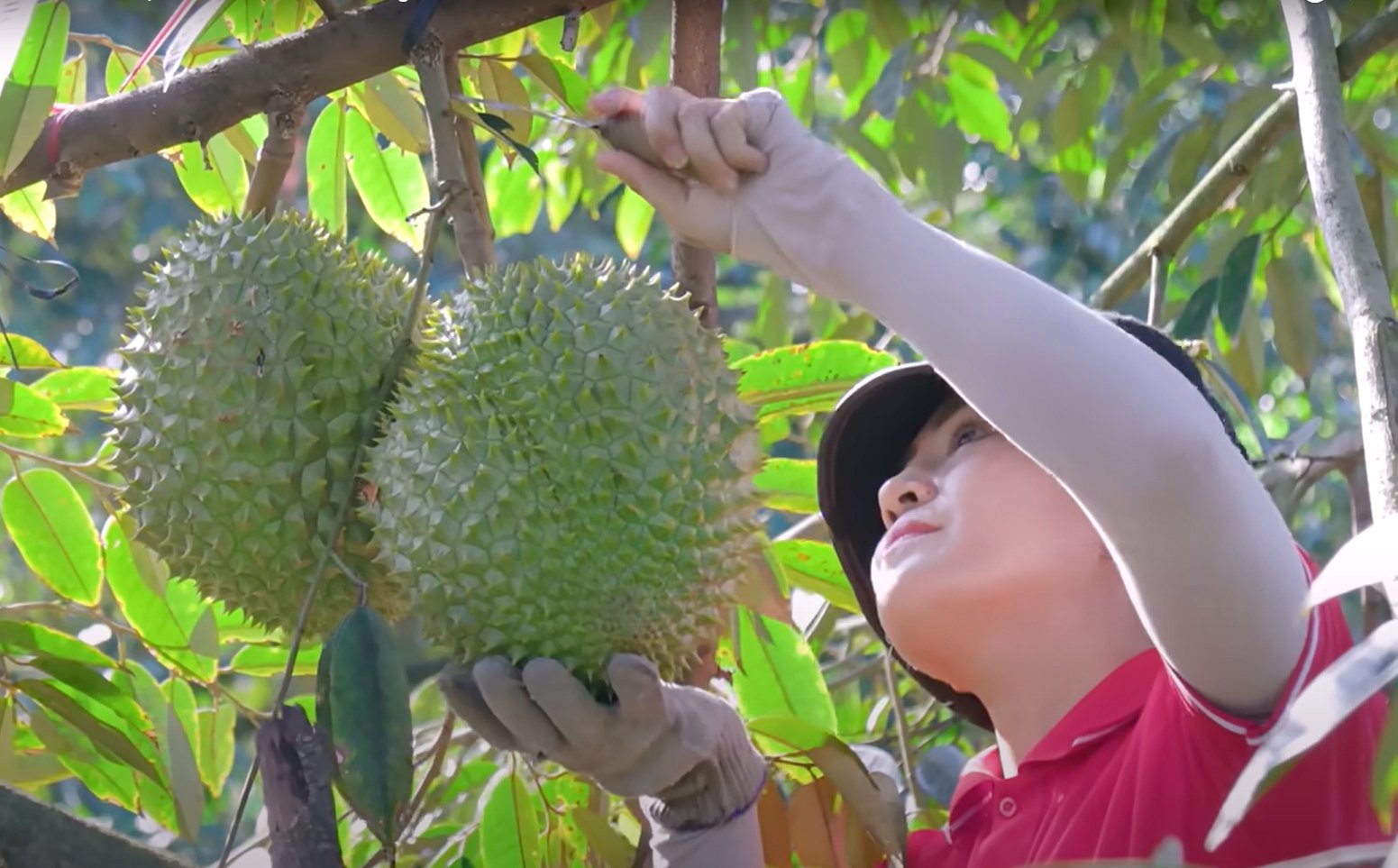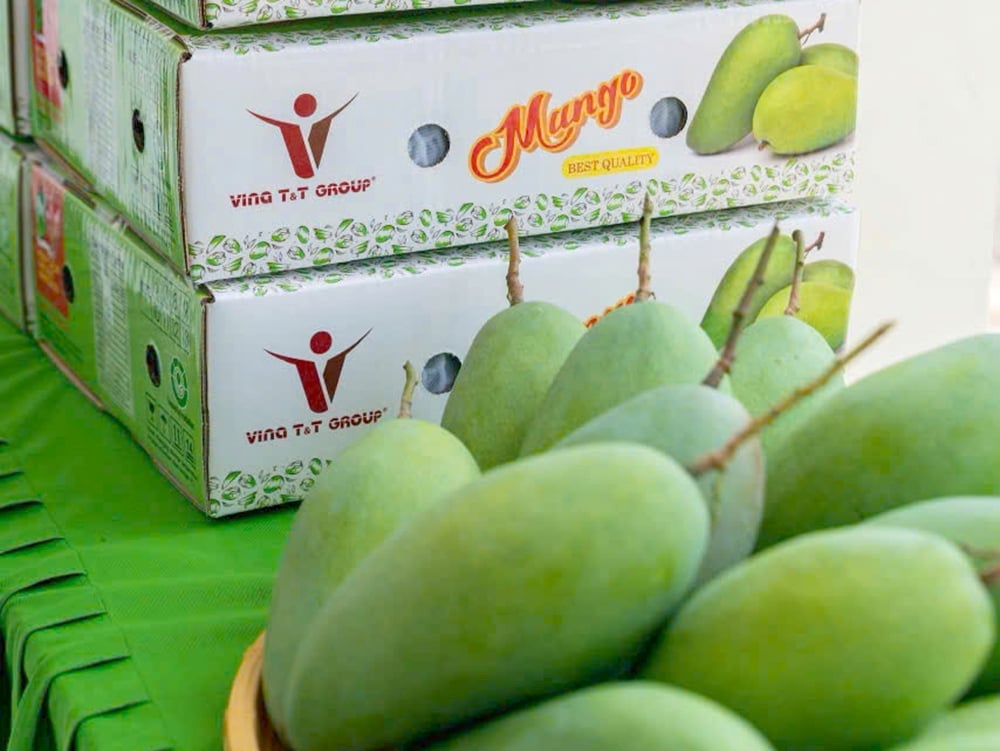November 19, 2025 | 00:34 GMT +7
November 19, 2025 | 00:34 GMT +7
Hotline: 0913.378.918
November 19, 2025 | 00:34 GMT +7
Hotline: 0913.378.918

Many businesses are currently purchasing durians to process into frozen durian for export to the U.S. and other markets. Photo: Son Trang.
Fruit and vegetable exports to China during the first four months of this year totaled USD 778 million, a significant 33% decrease from the same period in 2024, according to the General Department of Vietnam Customs. Conversely, exports to the United States increased by 66% year over year, reaching USD 154 million. Despite the challenges posed by the Chinese market, total fruit and vegetable exports experienced a 10.5% decline compared to 2024, a much smaller decline than the decrease observed in exports to China alone, largely due to robust growth in the U.S. and other significant markets.
Dang Phuc Nguyen, General Secretary of the Vietnam Fruit and Vegetable Association, observed that the robust export growth to the United States in the first four months of this year is partially attributable to American merchants exploiting the 90-day delay in the imposition of reciprocal tariffs. They increased the importation of long-shelf-life products, such as processed and frozen fruits and vegetables, during this period to stockpile them in advance.
To meet the demand from U.S. importers, numerous Vietnamese fruit and vegetable exporters are accelerating the delivery of processed and frozen products, such as frozen durian, to the U.S. market.
Nguyen stated that numerous businesses are procuring fresh durian for freezing and exporting it to various markets, including the United States, in response to the decline in durian prices in Vietnam resulting from reduced exports to China. Due to the high value of frozen durian as a commodity, this is one of the primary causes for the substantial increase in export turnover over the past four months.
Vina T&T Group is an example of a business that is expanding its frozen durian processing and exports. Vina T&T Group's CEO, Nguyen Dinh Tung, stated that the company is presently concentrating on durian due to the favorable prices for frozen processing and export. Currently, Vina T&T exports approximately 20 containers of frozen durian per month, with the U.S. being its primary destination.

A batch of mangoes from Vina T&T Group exported to the U.S. market. Photo: Son Trang.
Vietnamese exporters' proactive marketing and consumer outreach initiatives are another critical factor contributing to the increase in fruit and vegetable exports to the United States, as per Tung. Consequently, the U.S. market is experiencing substantial growth in the sale of a variety of Vietnamese fruits, including frozen durian, dragon fruit, pomelo, and coconut.
Coconut exports to the U.S. are also increasing steadily, which is a substantial contributor to the overall development. Coconut, according to Dang Phuc Nguyen, is Vietnam's primary fruit and vegetable export, making up 25–30% of the country's total fruit and vegetable exports. The U.S. received USD 360 million in fruit and vegetable exports from Vietnam in 2024, with fresh coconut accounting for approximately USD 77 million of this total.
Vietnamese fruit exporters are intently monitoring the ongoing negotiations between Vietnam and the U.S. over reciprocal tariffs, while also actively increasing their exports to the United States. At present, the U.S. is Vietnam's second-largest export market for fruits and vegetables. Exports to the U.S. in 2024 totaled USD 360 million, a 40% increase from 2023. This figure represents 5% of Vietnam's total fruit and vegetable exports.
According to Dang Phuc Nguyen, the current 10% import duty is not a significant concern for American fruit importers. Nevertheless, importers are expected to reevaluate their purchasing decisions once reciprocal tariffs are officially announced and implemented. The U.S. market will continue to accept Vietnamese fruit as long as the reciprocal tariff remains below 20%. However, it will become exceedingly challenging when it surpasses 20%.
Furthermore, Vietnamese exporters will be required to monitor the reciprocal tariff rates that the United States imposes on fruit imports from other Southeast Asian countries, particularly Thailand, due to comparable product offerings. Vietnam will find it challenging to remain competitive in the U.S. market if Thai fruit is subject to a significantly lower tariff than Vietnamese fruit.
At present, Vietnam is still importing more than it exports in the fruit and vegetable commerce between the U.S. and Vietnam. Vietnam imported USD 544 million worth of fruits and vegetables from the U.S. in 2024. Consequently, a significant number of individuals in the Vietnamese fruit industry are optimistic that the reciprocal tariff imposed by the U.S. government on Vietnamese fruit will not be excessively high.
Translated by Linh Linh

(VAN) 'If we can address disease challenges and properly plan farming zones, Vietnamese shrimp can absolutely rise to lead the world,' Mr. Le Van Quang affirmed.

(VAN) The year 2025 continues to mark a significant footprint for Chanh Thu Fruit Import-Export Group Joint Stock Company (Chanh Thu Group) in the international market.

(VAN) Participating in the exhibition celebrating the 80-year tradition of the Agriculture and Environment sector, Dong Giao Food Export Joint Stock Company (DOVECO) showcased a range of products utilizing new technologies.

(VAN) Vietnam’s pepper export turnover in the first 10 months of 2025 reached $1.39 billion, already surpassing the full-year figure of 2024.

(VAN) AGRITECHNICA 2025 has impressively reaffirmed its position as the world’s leading trade fair for agricultural machinery.
/2025/11/17/4947-2-104601_225.jpg)
(VAN) The international market is growing rapidly, creating major opportunities for Viet Nam's tilapia industry.
/2025/11/17/1234-2-010716_981.jpg)
(VAN) Deputy General Director of Viet Nhat Group Nguyen Dang Ngoc shared experiences on building linkage chains and developing sustainable tilapia farming that meets international standards.